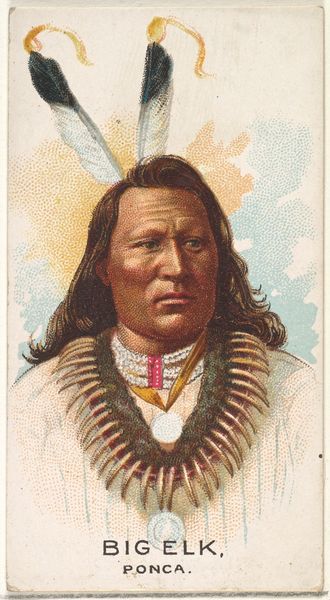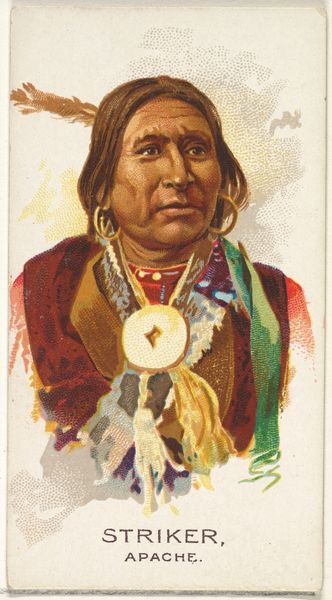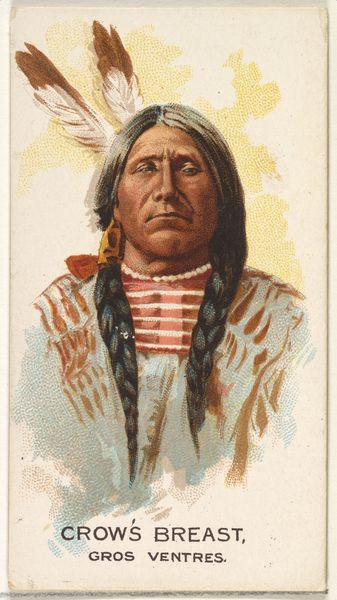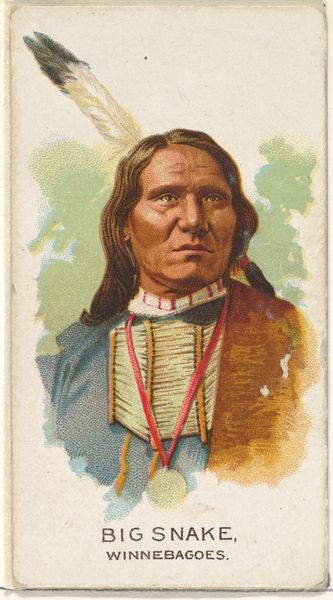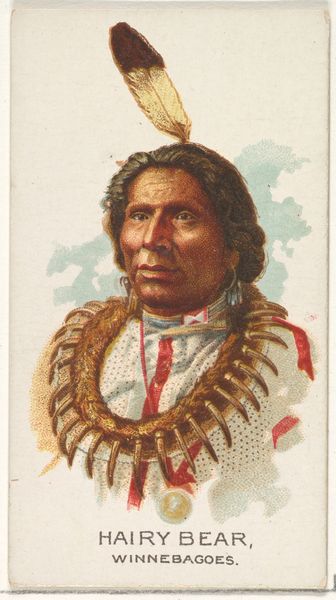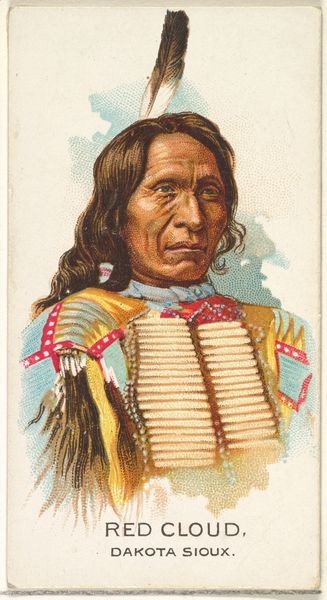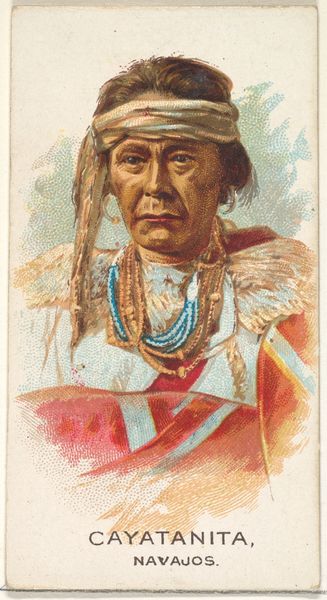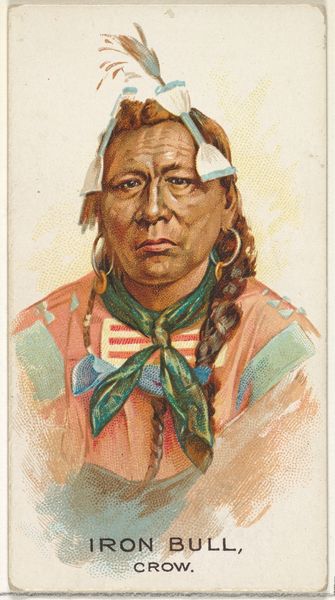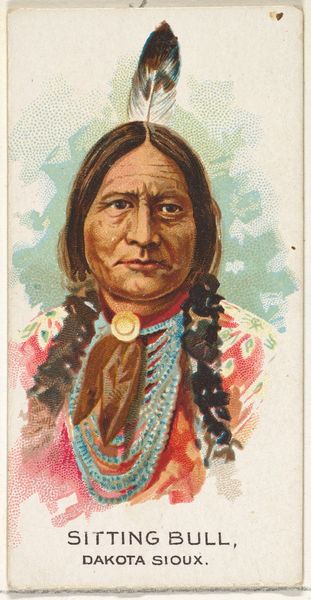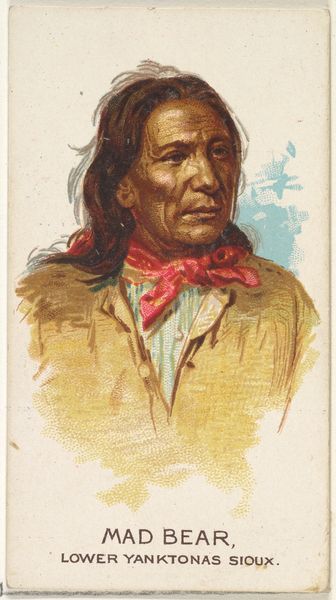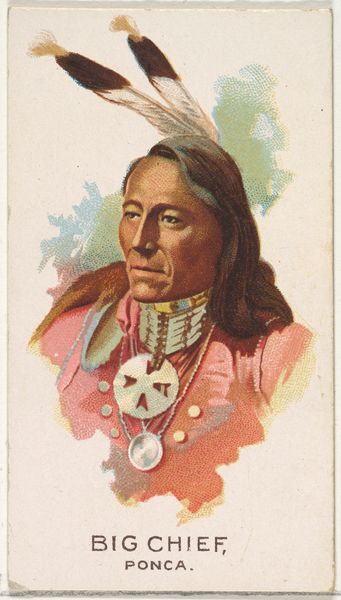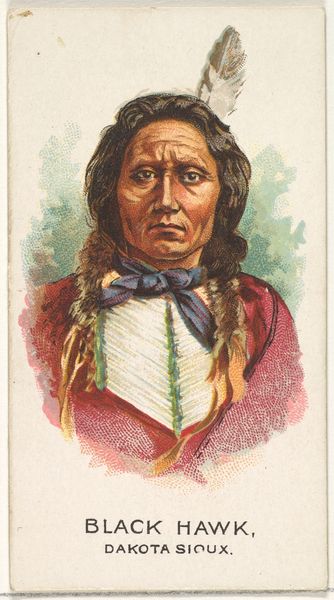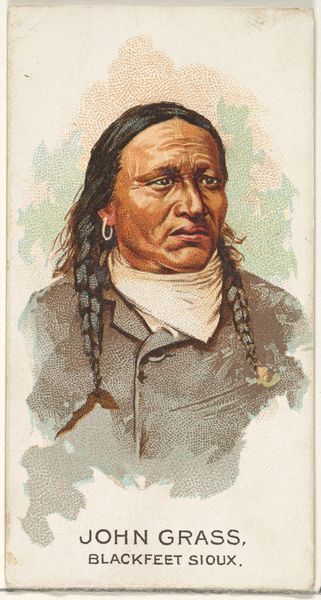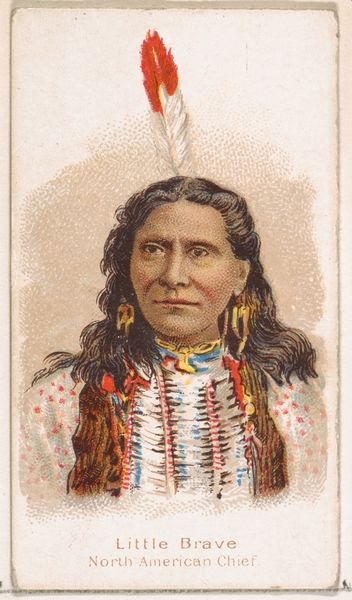
White Swan, Lower Yanktonas Sioux, from the American Indian Chiefs series (N2) for Allen & Ginter Cigarettes Brands 1888
0:00
0:00
drawing, coloured-pencil, print
#
portrait
#
drawing
#
coloured-pencil
# print
#
caricature
#
coloured pencil
Dimensions: Sheet: 2 3/4 x 1 1/2 in. (7 x 3.8 cm)
Copyright: Public Domain
Editor: This is “White Swan, Lower Yanktonas Sioux,” made in 1888 by Allen & Ginter as part of their American Indian Chiefs series. It's a colored-pencil drawing that was turned into a print. It's a fascinating portrait, but the bright colors and almost cartoonish features feel… unsettling to me. What’s your take on this work? Curator: You’re right to pick up on that tension. It’s important to remember these cards were produced as collectible inserts for cigarette packs. How do you think the context of commercial enterprise affected the portrayal of White Swan? Editor: It feels like they were objectifying him and his culture, turning him into a commodity. It's disturbing. Curator: Precisely. These cards, and similar depictions in advertising, contributed to a visual culture that reinforced existing power dynamics. These images normalized the erasure of Indigenous identity in service of capitalism and expansion. Look at the background treatment, how it almost dissolves. How does that stylistic choice inform the cultural message? Editor: It makes White Swan seem almost ephemeral, as if he’s fading away. The feather and other decorative elements appear almost theatrical. Curator: That’s astute. Even the bright colors, seemingly celebratory, could be interpreted as a form of exoticization. They distract from the complex reality of the individual and the societal injustices his community faced. What does it tell us about the popular understanding, or perhaps *misunderstanding*, of Indigenous people at the time? Editor: I hadn't really considered how pervasive and insidious these images could be in shaping public opinion. It's disheartening to think about the political implications behind something seemingly harmless. Curator: Indeed. It's a stark reminder of the power of images and their role in constructing, and often distorting, our understanding of history and culture. Editor: It’s been really enlightening to think about this portrait in the larger social context. It completely changes the way I see it.
Comments
No comments
Be the first to comment and join the conversation on the ultimate creative platform.
